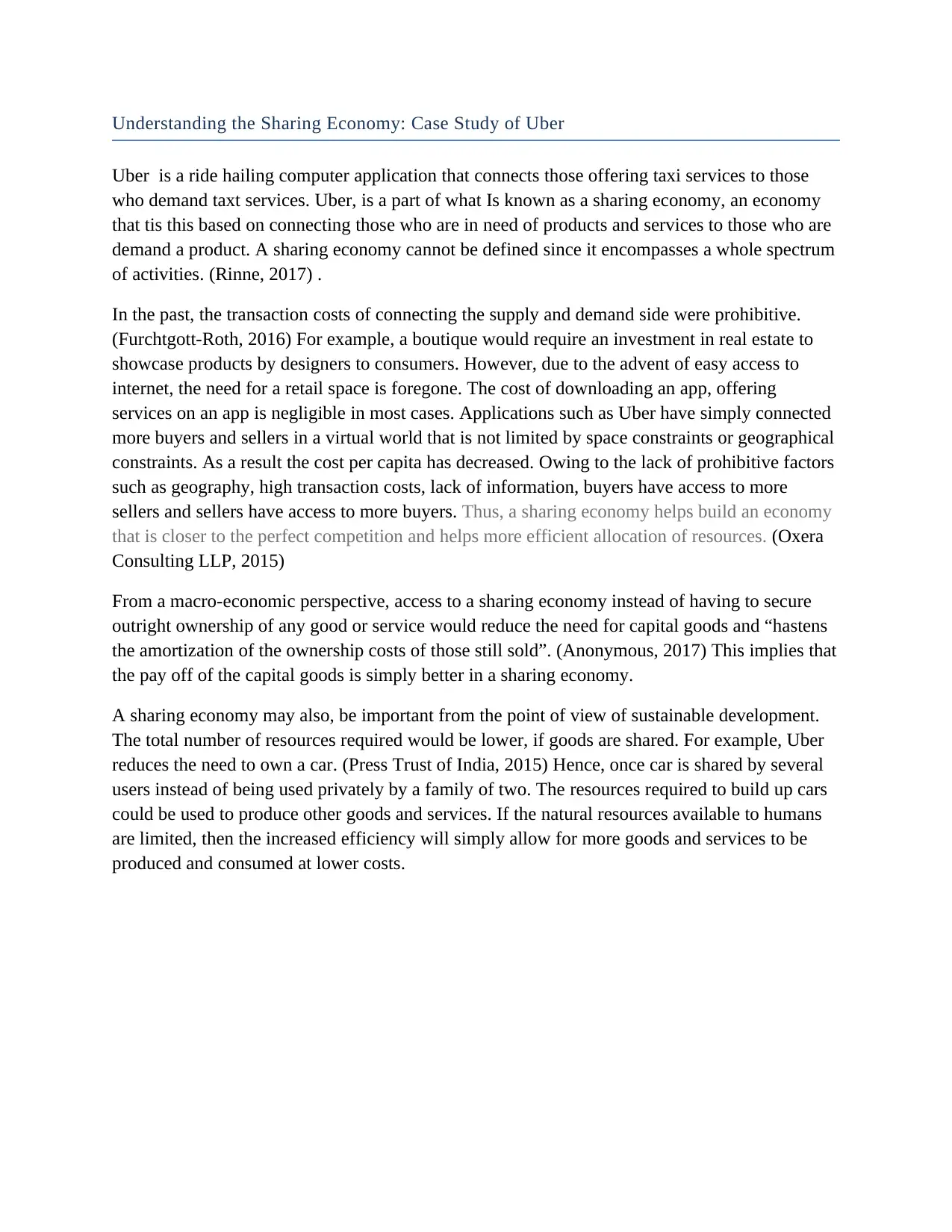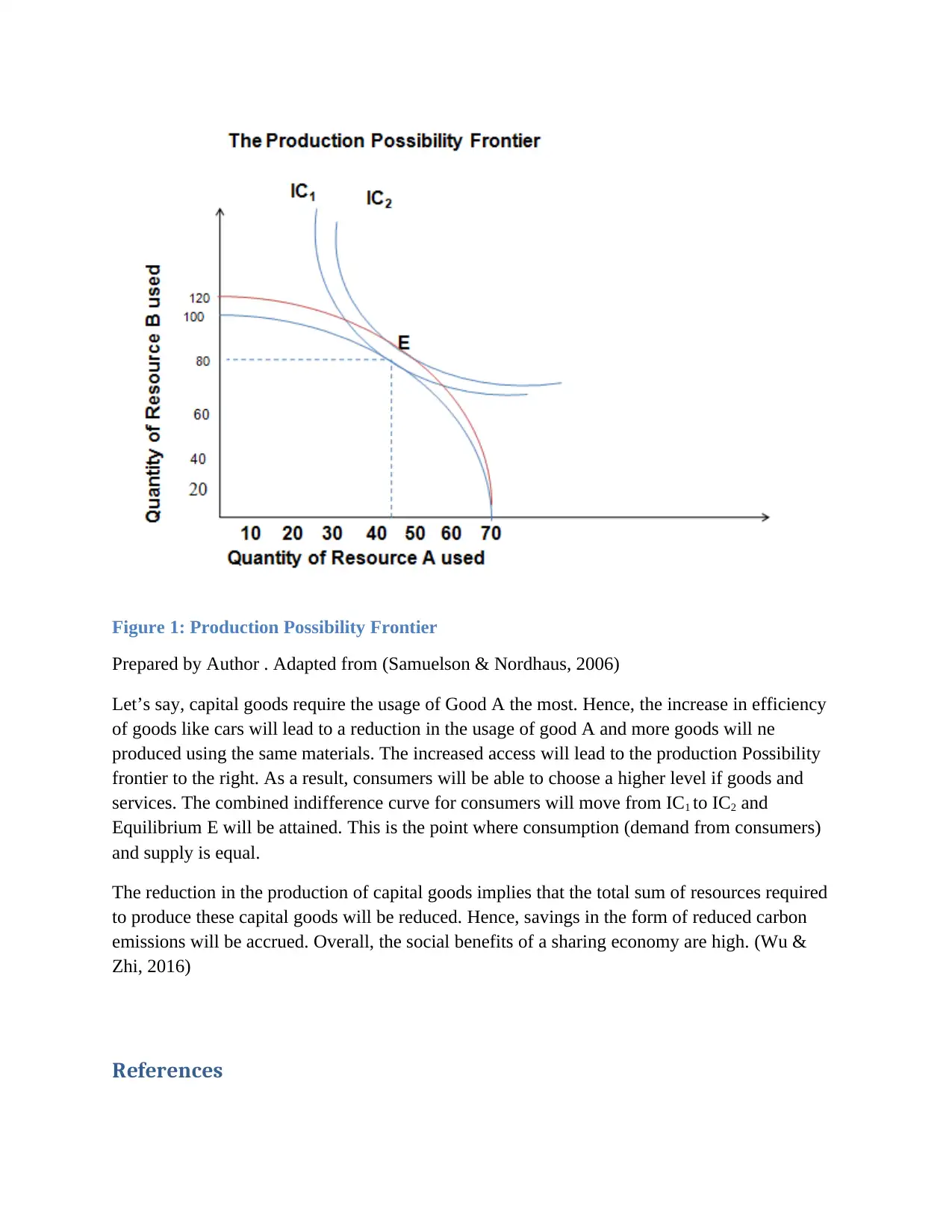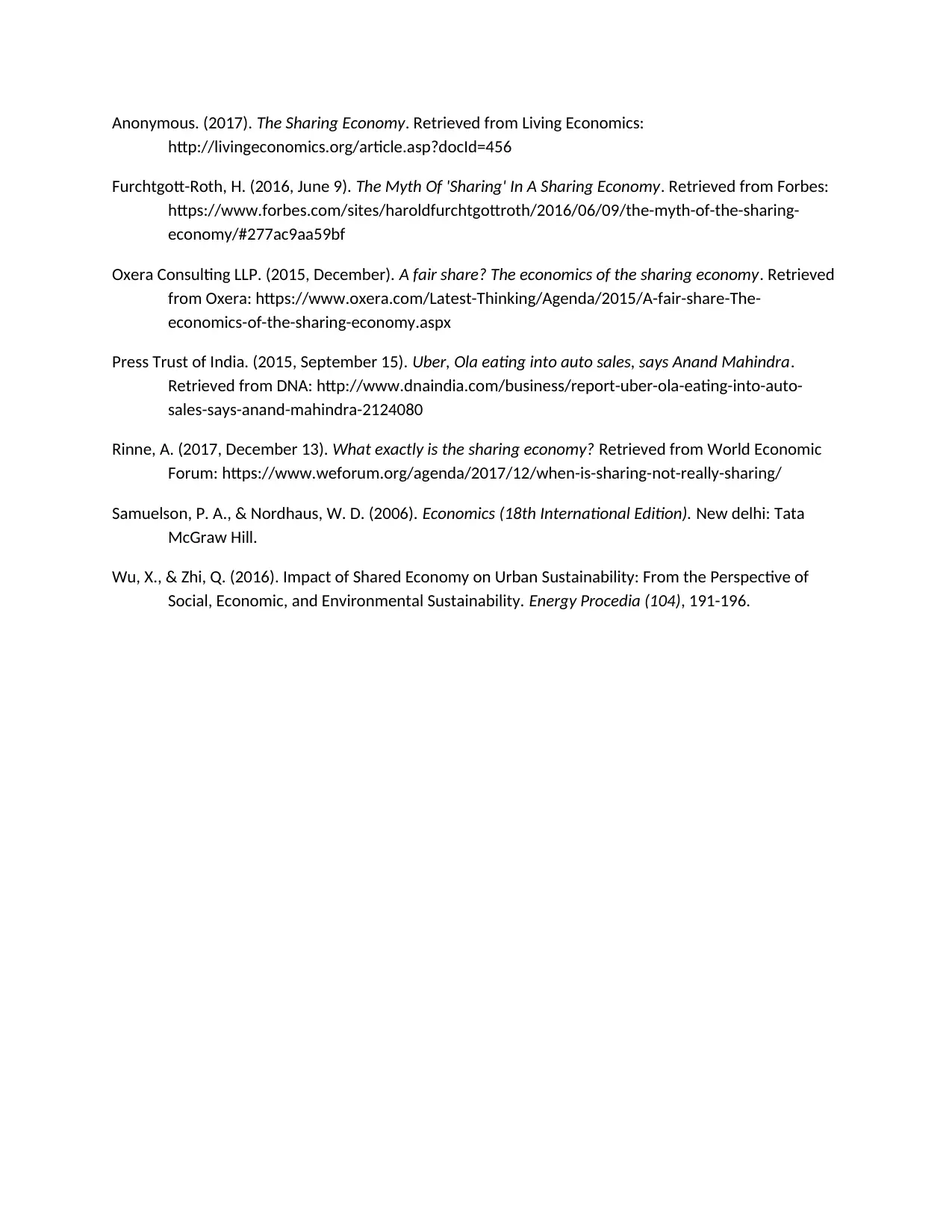Uber Case Study: Exploring the Economics of the Sharing Economy
VerifiedAdded on 2023/06/12
|3
|855
|243
Case Study
AI Summary
This case study explores Uber's role within the sharing economy, highlighting its impact on resource allocation and economic efficiency. It argues that the sharing economy, exemplified by Uber, reduces transaction costs and fosters a more competitive market environment by connecting buyers and sellers more effectively. From a macroeconomic perspective, it suggests that the sharing economy reduces the need for capital goods and promotes sustainable development by optimizing resource utilization. The analysis uses a production possibility frontier model to illustrate how increased efficiency in sectors like transportation can lead to a shift towards producing more goods and services with fewer resources, ultimately benefiting consumers and reducing carbon emissions. The study concludes that the social benefits of a sharing economy are significant.
1 out of 3










![[object Object]](/_next/static/media/star-bottom.7253800d.svg)